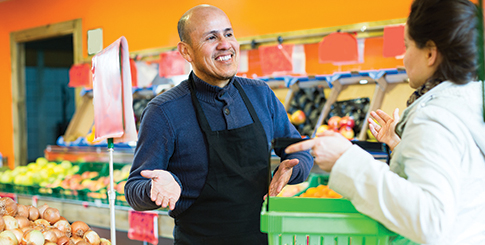Merchandising the Future
The research and development of new herbicides and pesticides was yet another factor in play. “Diseases don’t go away and are perennial in the onion industry,” comments Mininger.
Complicating the yearly battle to keep crops healthy are that new active ingredients, called AIs, take upwards of a decade to develop, with an average cost of more than $250 million according to a 2016 study for CropLife America. In the meantime, grower-shippers are trying to make a living from a crop selling for “generally the same price as 30 to 40 years ago,” observes Vlahandreas.
On the positive side, as Kim Reddin, director of public and industry relations for the National Onion Association, points out, onions remain a central part of most Americans’ diets. “People are not going to stop eating onions,” she asserts. Instead, what will change is “the mix of business, with lines blurring between the grower, retailer, and consumer,” she says, believing meal-kit services, grocery delivery, and other on-demand platforms and technologies, as they take root or continue to evolve, will change the commercial landscape from beginning to end.
Harris Cutler, president of Race-West Company in Clarks Summit, PA, also recognizes the need for produce specialists to adapt to ever-changing economic and technological realities.
“Traditionally, we’ve stayed in the background and allowed our retail customers to handle all communication with end users. Clearly, that’s their space,” he notes.
However, in today’s new more interactive environment, Cutler says, “We’re beginning to engage with consumers.” This interaction can take many forms, he explains, from adding more varieties, choices, and flavor to what he terms as “flawless packaging” that can keep items fresh longer and offer convenience.
Accordingly, Cutler says Race-West is rolling out “innovative new culinary approaches to meal preparation” while still providing plenty of value through bulk bin programs and low-price options for shoppers. Overall, though, for produce businesses to succeed, he believes in a very simple mantra: “Companies must listen to the customer.”
Mininger looks at success and the future in a different way, citing retail behemoth Amazon as one to watch. As a business delivery innovator, he believes everyone along the fresh produce supply chain should pay close attention. “All of us need to keep our eyes open, ears open, and look for those niche opportunities.”
End Notes
As the produce industry evolves to meet the ever-changing needs of consumers—growers, shippers, retailers, and trade associations will continue to do what they do best—stimulate new marketing opportunities while promoting the high quality, availability, variety, affordability, and health benefits of potatoes and onions.
Image: Iakov Filimonov/Shutterstock.com



